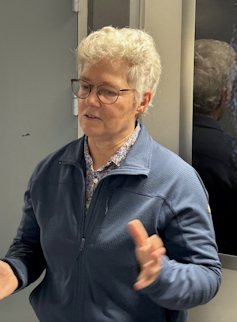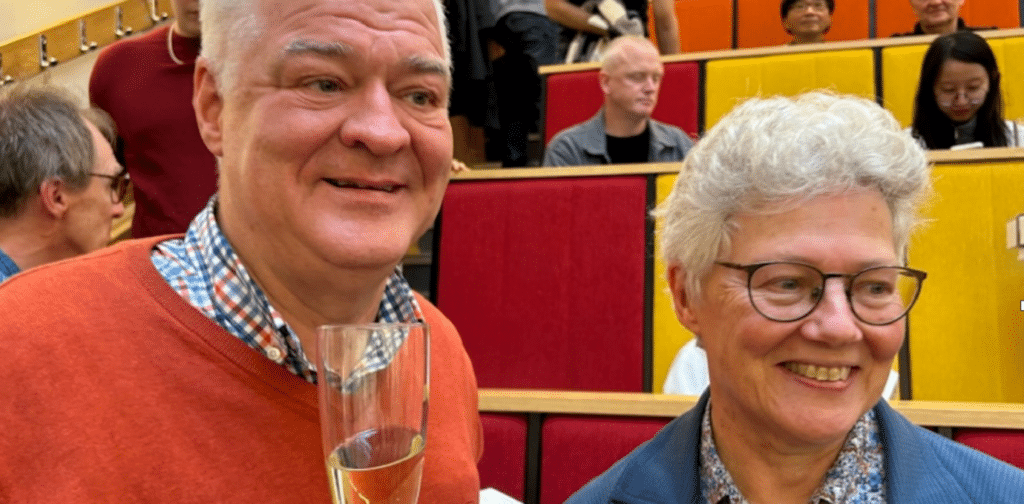It is perhaps her modesty and lack of interest in fame and glamour that makes Anne L’Huillier such a great physicist, writes Sune Svanberg, from Lund University in this article republished from The Conversation.
Most of the atomic physics division at Lund University were assembled in a spacious room with a big screen to await the announcement of the 2023 Nobel laureates in physics from the Royal Academy of Sciences on October 3. Of course, the Nobel secrecy is perfect, but there was still some expectation in the air.
When the screen with the laureates appeared, and with our colleague Anne L’Huillier´s face included, the roar almost lifted the roof – the big lasers in the basement must have been brought out of alignment!
L’Huillier, however, was nowhere to be seen – she had been giving a lecture to students.
New laser facility
About 30 years ago, the atomic physics group in Lund was considering a new research orientation. We ultimately selected the field of high-power laser-matter interaction. For this purpose, we managed to acquire a quite unique laser in 1992 (called a terawatt laser), firing 10 ultrashort pulses per second.
This was possible thanks to good academic contacts with leading laser groups in the US and Europe, as well as with industrial partners. The generous support by the Wallenberg Foundation (a key player in Swedish research financing) secured the realisation of arguably the most attractive system at the time for performing advanced research in a novel field of atomic physics.
At this point, L’Huillier was an up and coming researcher in France. Only years earlier, in 1987, had she discovered that many different overtones of light arise when you transmit infrared laser light through a noble gas – as a result of the gas and laser interacting.
With our new facility, we were able to attract L´Huillier to come to Lund with her own dedicated experimental set-up. This came quite naturally since we had, as project preparation, also visited the CEA Saclay Center where she was employed. I also invited her to be one of the key speakers at the inauguration of our new facility in Lund.
When on site for the experiments, it immediately became clear to us that L’Huillier was an extremely talented physicist, both regarding experiments and theory, with great promise for the future. We published our first joint paper in 1993.
L’Huillier felt good about Lund and, for many different reasons, decided to stay on. At first, she was employed on a lectureship and later on a dedicated professorship, which we got funded. This was a strike of luck for Lund – L’Huillier could easily have obtained prestigious positions elsewhere.

She was also very dedicated to learning Swedish. That says a lot. In a small country like Sweden, the natural language in an international endeavour like science is English, but L’Huillier became absolutely fluent in our “exotic” language.
At an early stage, I transferred the leadership of the high-power Laser laboratory to L´Huillier and Claes-Göran Wahlström. With the help of many talented collaborators, the field has developed tremendously in Lund, making it one of the leading hubs in this fascinating research field.
L´Huillier energetically pursued her work with high harmonics and the associated formation of attosecond laser pulses. These were the areas for which she ultimately won the Nobel prize – work that has helped scientists gain a window into the high-speed world of electrons.
In particular, she could show that processes earlier considered to occur instantaneously in fact come about with an extremely short delay.
Modest and rigorous
L´Huillier is absolutely brilliant. Despite that, she has always had quite a low-key personality. She cares a lot for her collaborators and students. It is perhaps her modesty and lack of interest in fame and glamour that makes her such a great physicist. She doesn’t cut corners and has a deep, genuine interest in science.
She has been, and is, a true role model for young scientists – female and male alike – showing how excellent research can be combined with enthusiastic teaching.
L´Huillier eventually talked to the Royal Academy in Stockholm during a scheduled break in her class. She later joined our celebration party, beaming and extremely happy. Clearly this was the ultimate achievement, the diamond among the many other distinctions she had already received.
The celebrations went on all afternoon, together with university leadership and students alike. L´Huillier was in an endless row of interviews. Receiving the highest scientific award will certainly change her life, but I am sure that she will always remain the same generous and modest person that we all came to know her as.
Our warmest congratulations to our “own” Nobel laureate!
Sune Svanberg, Emeritus Professor of Physics, Lund University
This article is republished from The Conversation under a Creative Commons license. Read the original article.


